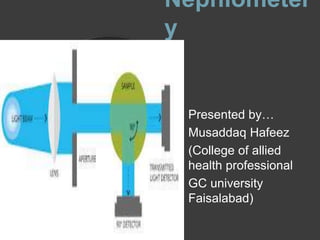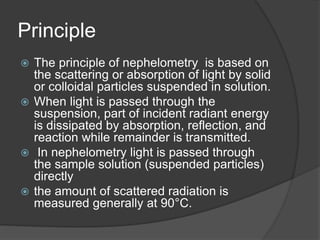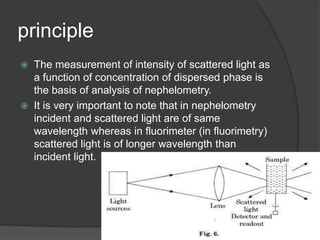Nephlometry is a technique used to measure the concentration of a solution based on its light scattering properties. It works by passing light through a sample and measuring the amount of light scattered at an angle, which is determined by the number and size of particles in the solution. There are two main types - endpoint nephelometry measures scattering after the reaction is complete, while kinetic nephelometry measures the rate of scattering over time. Nephelometry is commonly used in immunology to determine levels of antibodies, antigens, and other proteins in blood by measuring the scattering of antigen-antibody complexes formed. It has advantages of being rapid and simple but also has disadvantages of higher cost and limited use for low concentration samples

















